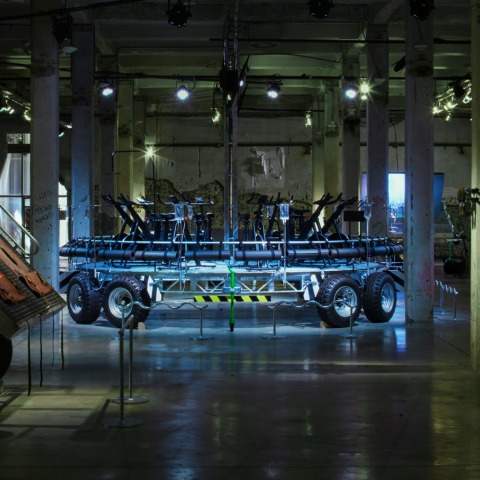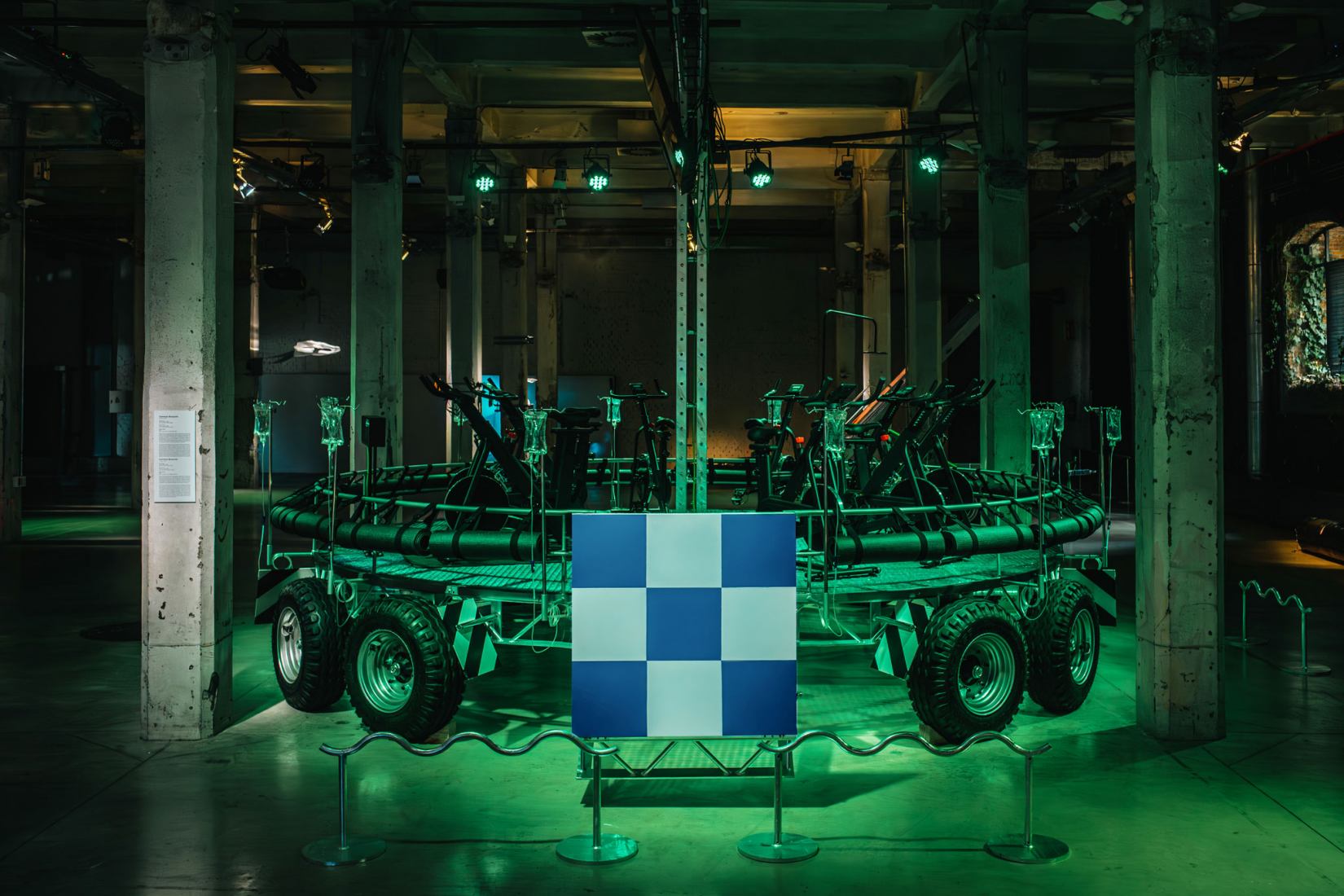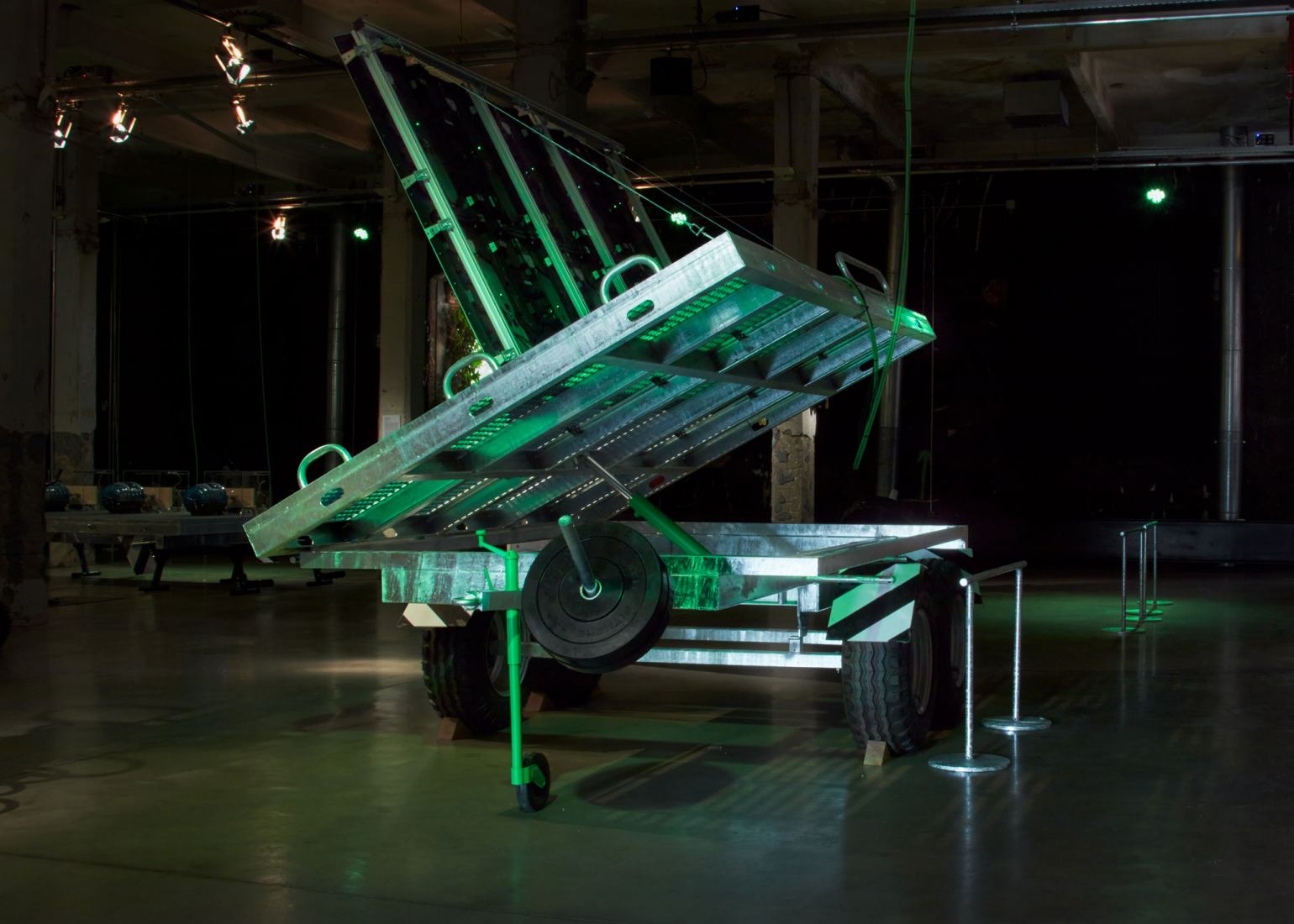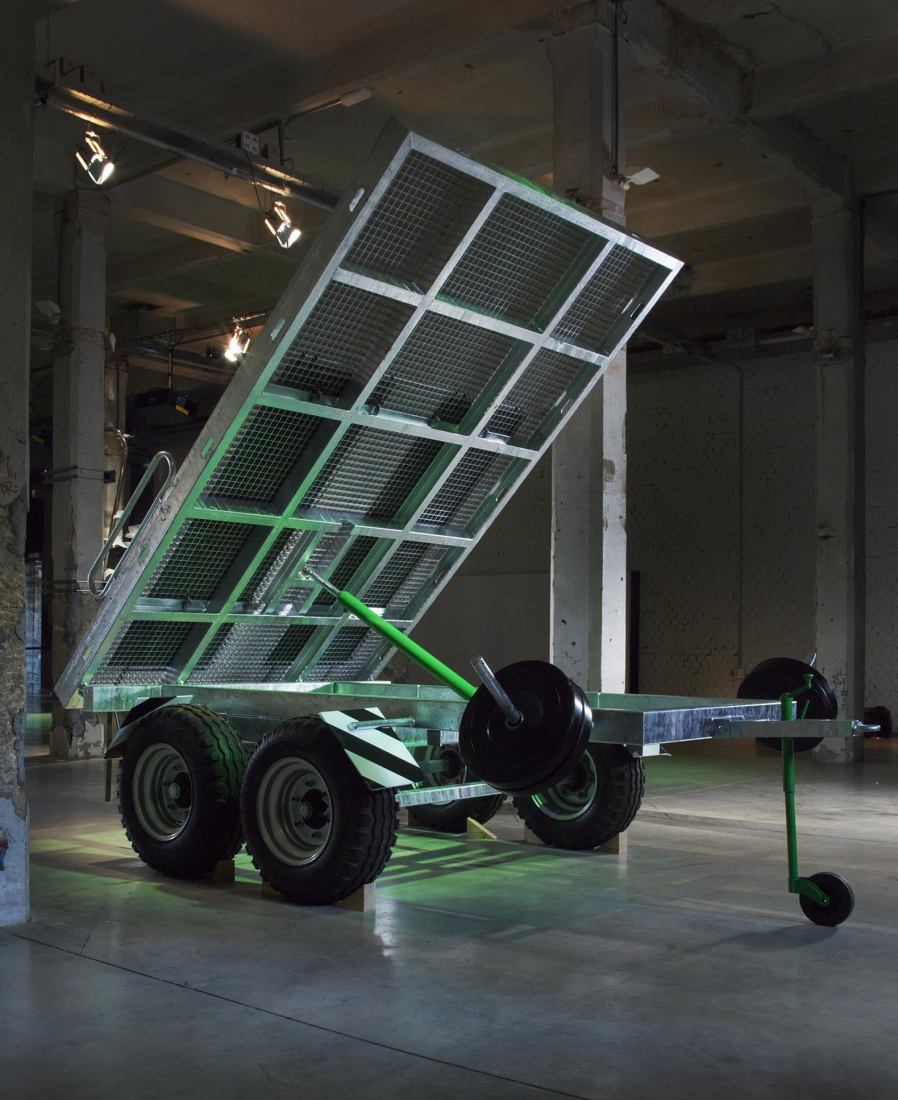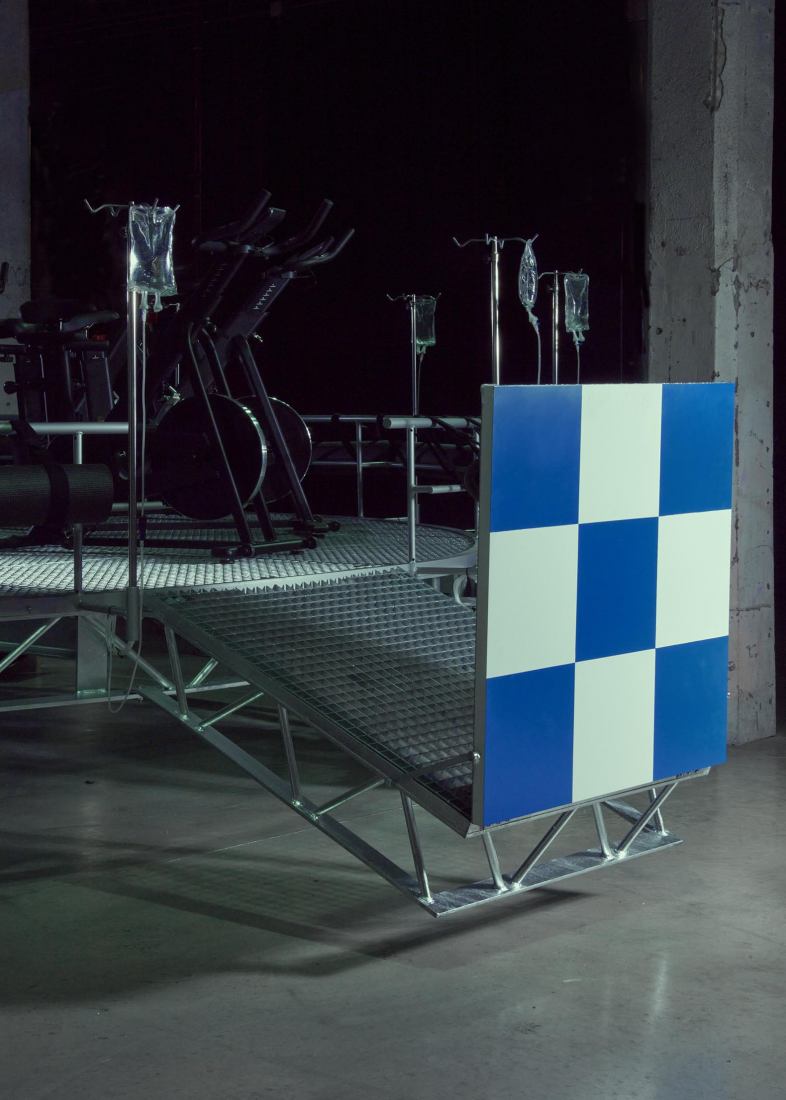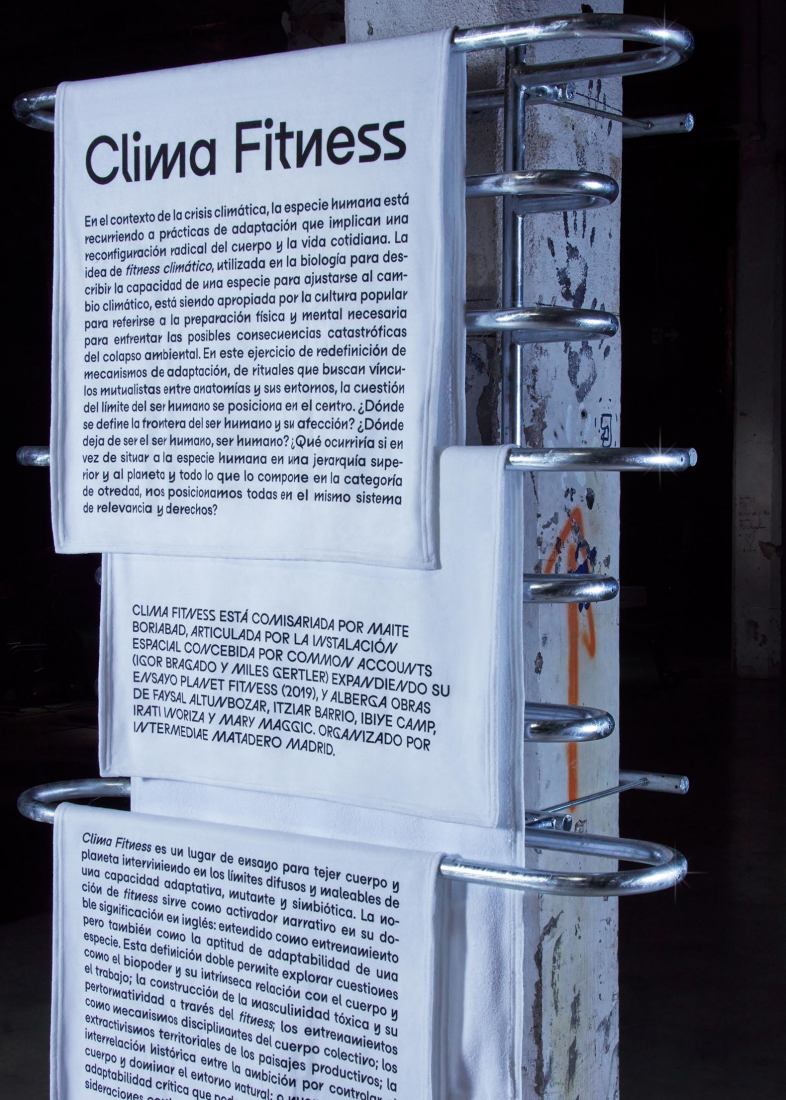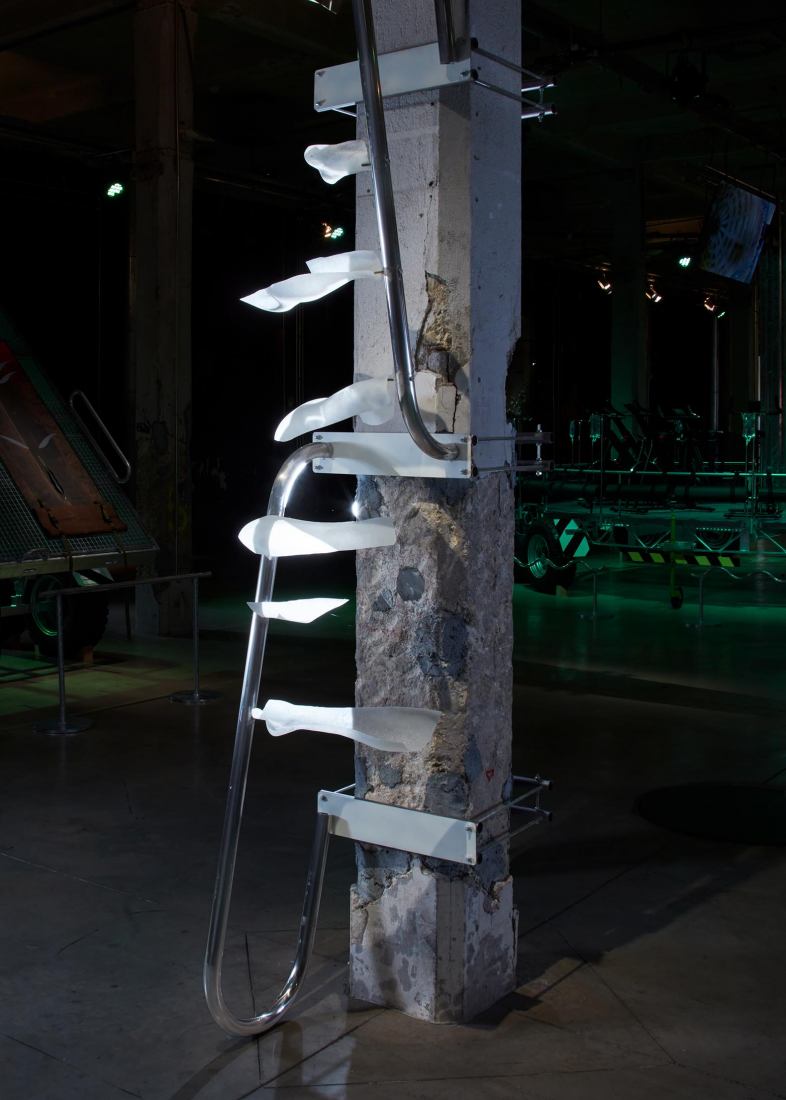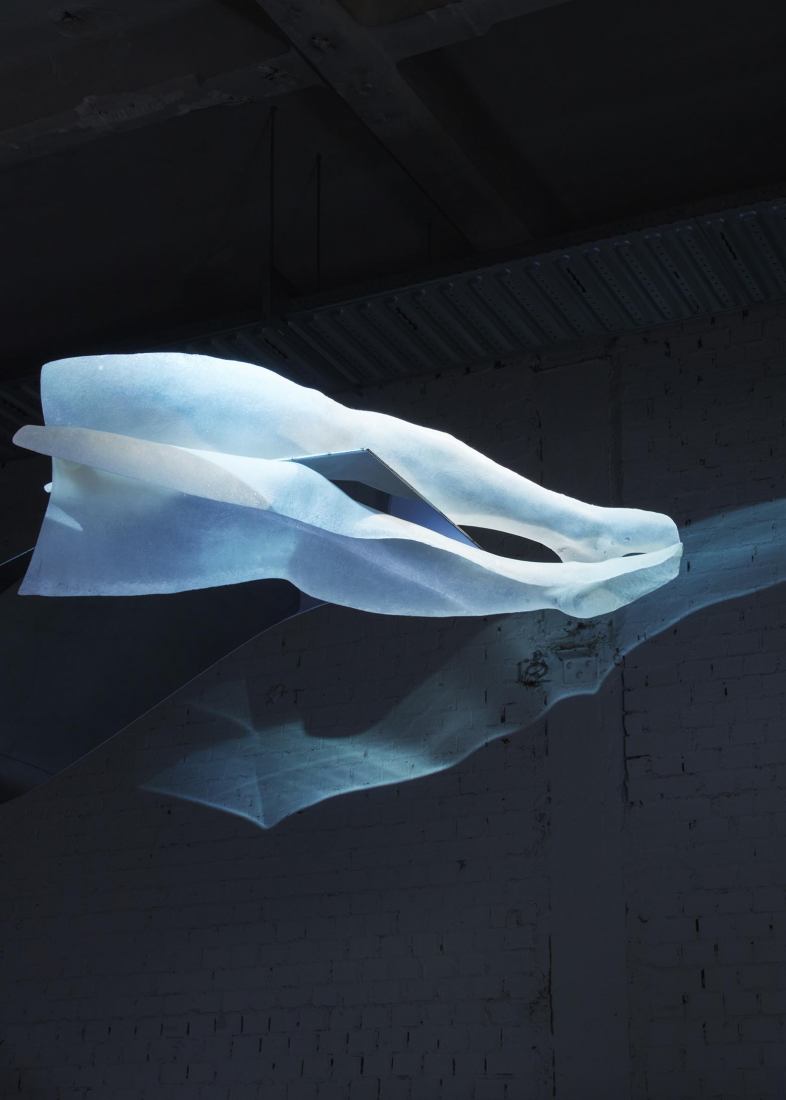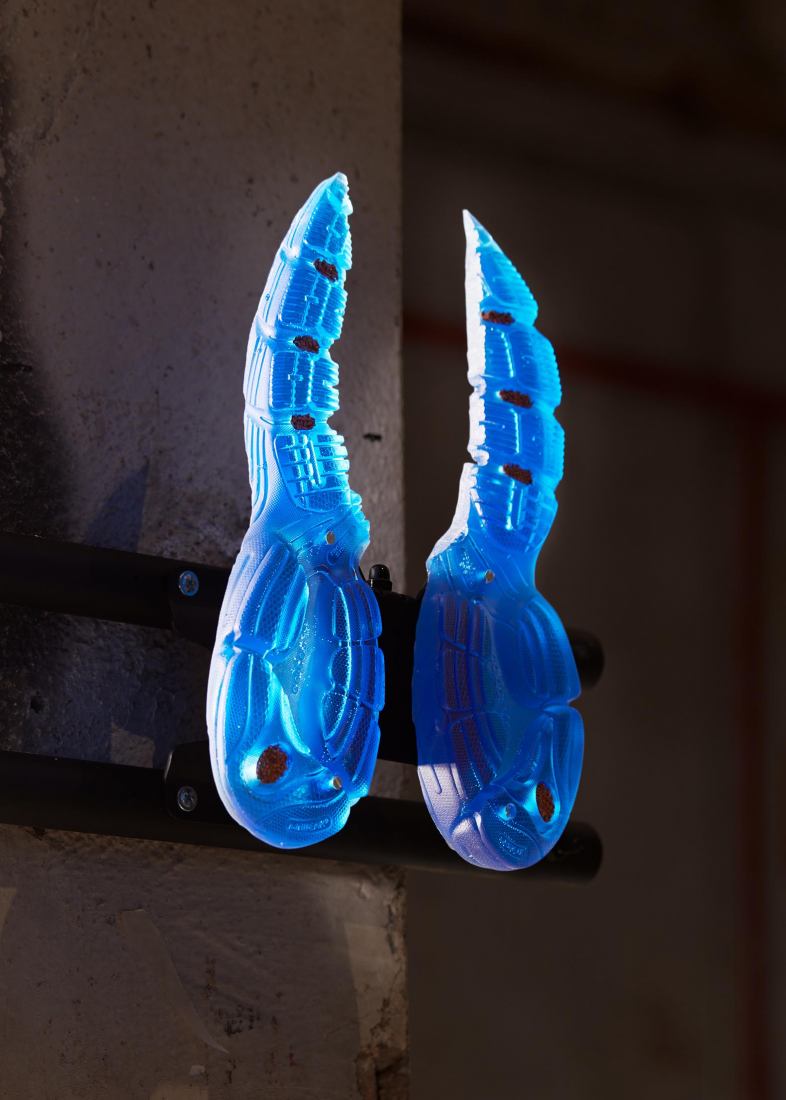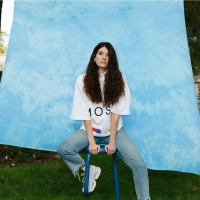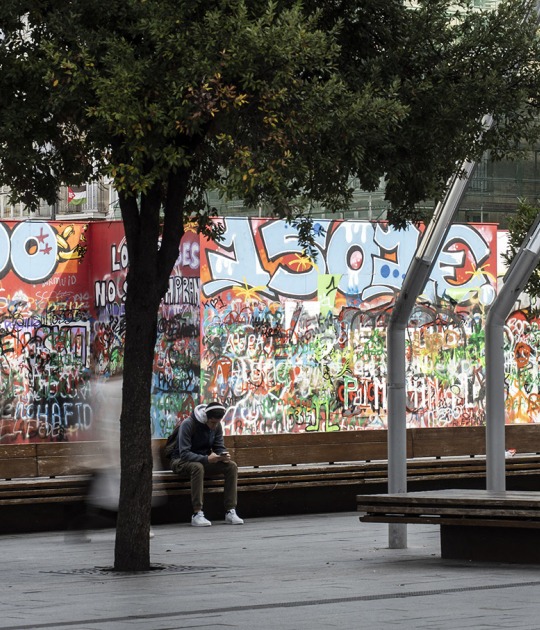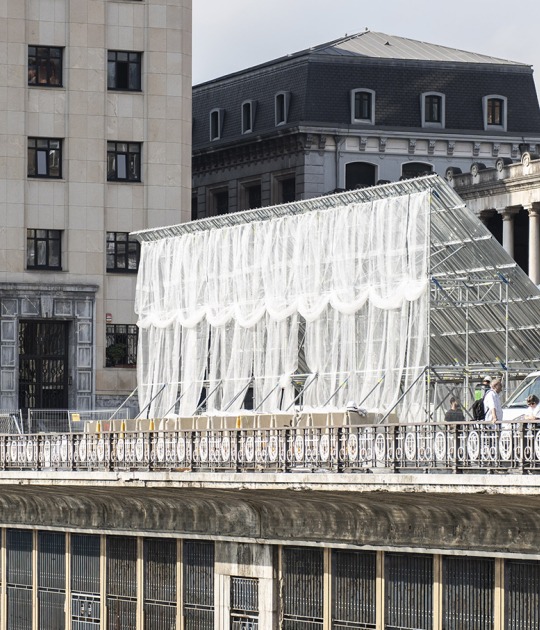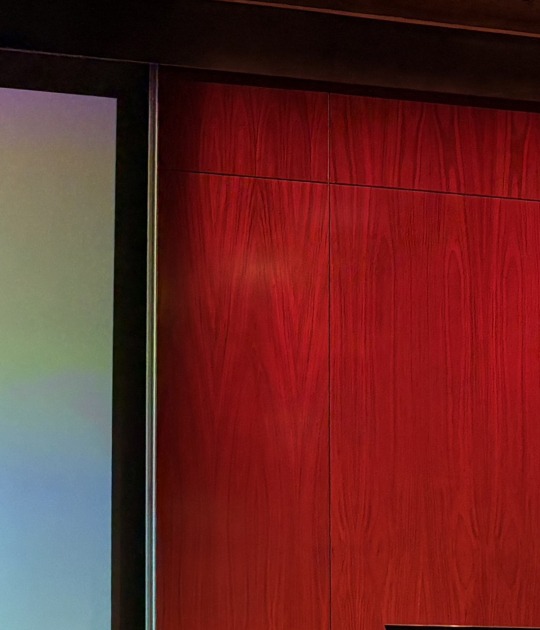The Clima Fitness exhibition proposes an alternative reflection on the relationship between the body and the planetary, which actually focuses on the ability we have to design ourselves as a direct consequence of climate change, taking from evolutionary biology, the term "climate fitness". » that describes the ability of a species to adapt to climate change.
The proposal shows the other side of climate change, the assumption of the inevitable, and the search for how to accommodate this change. The concept of climatic fitness is shown as something present in trends that seek to condition themselves mentally and physically to adapt to the potential consequences of natural disasters.
With a certain degree of naive optimism, without facing intermediate losses and facing more apocalyptic positions, as a radical claim, and which it intends to moderate according to the exhibition's curator, Maite Borjabad: «This exhibition is not about sustainability, but about how climate change affects every day, the day-to-day, and how we ourselves are changing because of it».

Clima Fitness. Installation by Common Accounts. Photograph by Geray Mena.

Climate Fitness: Adaptability Rituals by Maite Borjabad
In the context of the climate crisis, the human species is having to resort to adaptive practices that imply a radical reconfiguration of the body and everyday life. Used in biology to describe a species' capacity to adjust to climate change, the idea of climate fitness is being appropriated by popular culture to refer to the physical and mental preparation needed to face the possible catastrophic consequences of environmental collapse. This is the case put forward in the essay Planet Fitness by Common Accounts (Igor Bragado and Miles Gertler), upon which this exhibition elaborates. From cosmetics that seek to protect the skin from the effects of pollution to communities of "survivors" undergoing training to withstand the potential collapse of society, to diets that enhance individual and planetary health, new forms of adaptability are being explored that imply a profound redefinition of the relationship between the body and its environment. Adaptability is not just an individual practice, but rather a tool with which to question the social and economic structures that have led us to the climate crisis in the first place. Therefore, any redefinition of adaptability cannot occur in a political and social vacuum.
"Through the concept of planetarity coined by Gayatri Spivak, the post-colonial philosopher allows us to reformulate the relationship between the human and the natural world from an ecological perspective, that is at the same time intertwined with social justice and decolonial feminist thought, proposing ethical relational frameworks as alternatives to globalization. Under a global capitalist system, the planet is othered, as if belonging to a species of alterity, and therefore pertains to another system. Yet we inhabit it as if it were on loan to us.
Planetarity entails an ethical and political commitment to the Other, not only as an object of our compassion or sympathy but as an active subject of their own liberation and emancipation. [...] Planetarity compels us to rethink our relationships with the environment, acknowledging that our survival as a species is inexorably linked to the health and well-being of the planet Earth as a whole. “
Gayatri Spivak
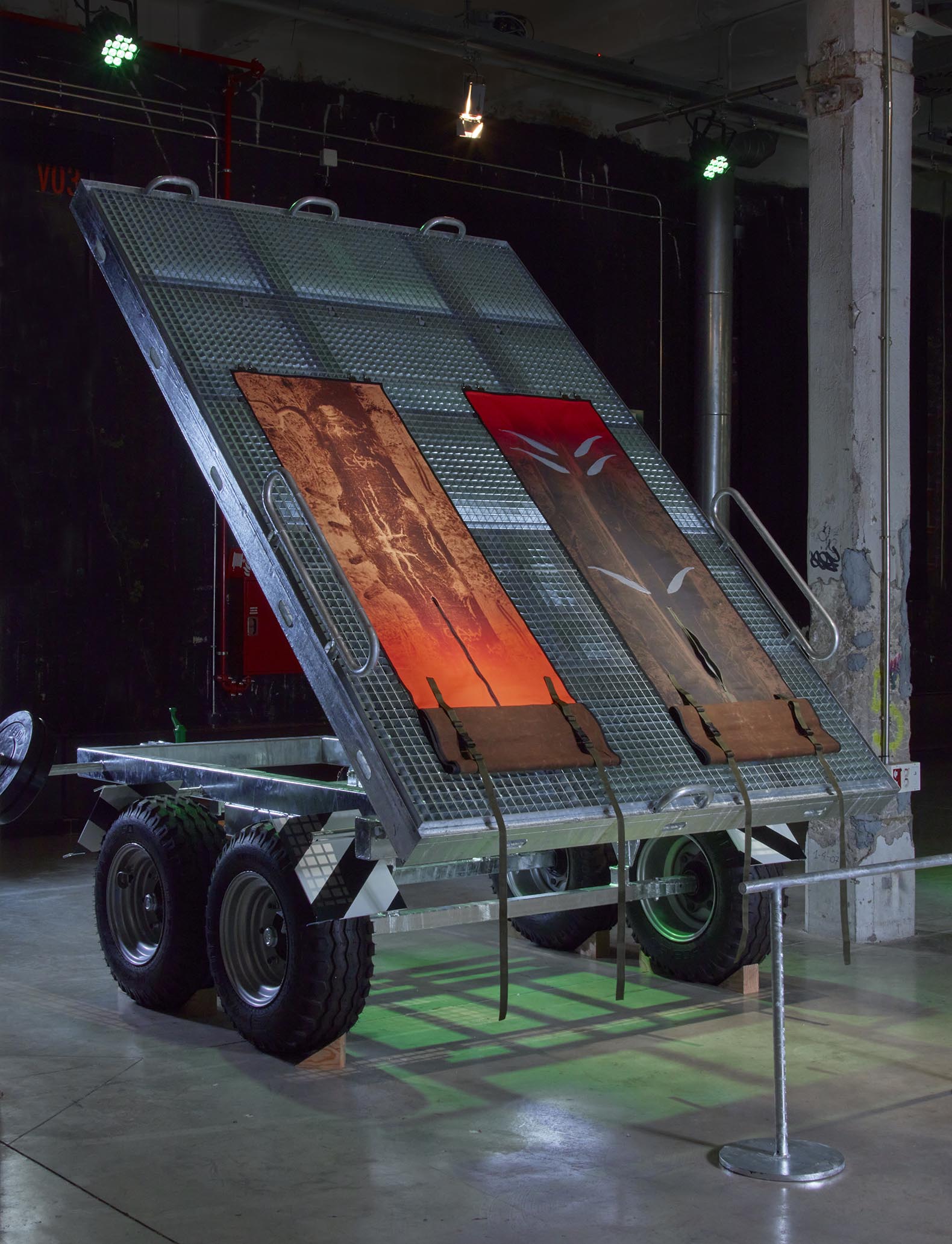
Art by Faysal Altunbozar. Clima Fitness. Installation by Common Accounts. Photograph by Geray Mena.
Responding to the claim posed by Gayatri Spivak, which urges the subversion of hierarchies between species which could potentially lead in a way to the abolition of otherness, I wonder: What would happen if instead of placing the human species in a superior hierarchy—and the planet and everything else that goes with it in a category of otherness—we were all placed in the same system of relevance and rights? Eduardo Viveiros de Castro and Déborah Danowski, exploring Amerindian cosmologies and drawing from their teachings, bring an alternative conception of the human that differs from traditional Western views. As they describe in their book ¿Hay un mundo por venir? Amerindian cosmologies do not establish a radical distinction between the human and the non-human; rather, they recognize agency and subjectivity in all forms of life, including animals, plants, or spirits. In this proposal, the universe unfolds through a process of diversification, starting from humanity as the raw material from which the different categories of beings and things in the universe take shape. From this perspective, the human is not limited to human beings alone but encompasses all species and forms of life. This conception challenges the Western anthropocentric hierarchy, which grants privileged and dominant positions to human beings over the rest of the planet.
“In the beginning, in essence, everything was human, or rather, nothing was human. In a considerable number of Amerindian myths, [...] the existence of a primordial humanity is imagined as the sole substance or material from which the world would come to be formed. After a series of events, certain fractions of the original humanity [...] transform into the biological species, geographic accidents, meteorological phenomena, and celestial bodies that compose the current cosmos. The part that did not transform, that remained essentially the same, is historical or contemporary humanity. [...] Everything was "human," but everything was "one." Humanity was a polyonymous multitude; it presented itself from the outset in the form of internal multiplicity, whose morphological externalization, namely speciation, is precisely the subject matter of cosmogonic narrative. It is nature that "births" or "separates" from culture, and not the other way around, as argued by Western anthropology and philosophy. “
Déborah Danowski y Eduardo Viveiros de Castro
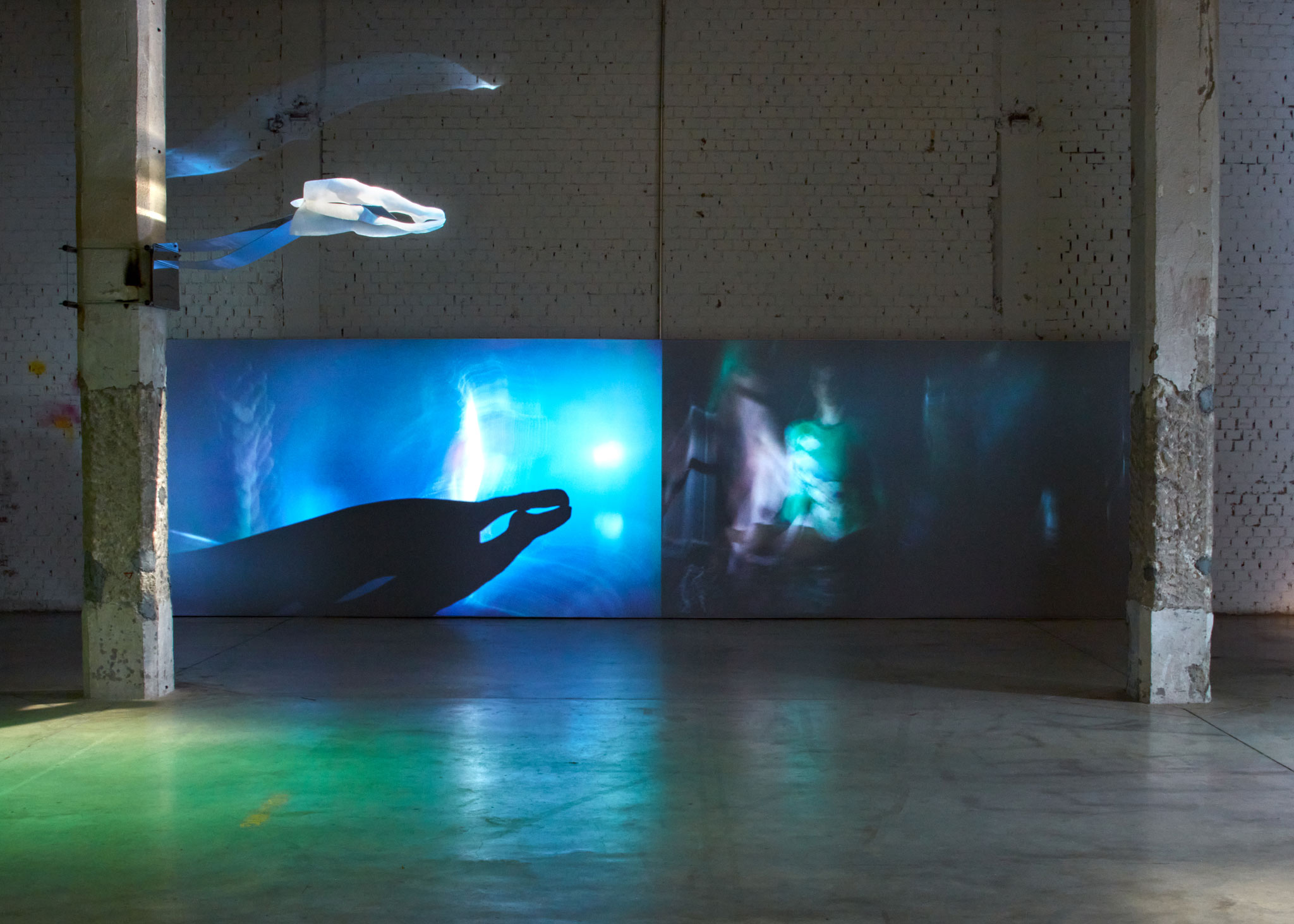
Art by Irati Inotiza. Clima Fitness. Photograph by Geray Mena.
Perhaps, equipped with this conceptual framework and consequent action, the problem that constitutes the premise of this project (the climate crisis) might be obsolete: perhaps it would not have even arisen. The thing is, a paradigm shift requires not only consciously subverting the systems we are immersed in but also engaging in radical exercises of imagination and thought that provide us with new lenses. Clima Fitness, therefore, represents a testing ground for weaving together body and planet through radical and resilient narratives. Thus, the notion of fitness serves in this project as a narrative activator in both senses of the word. On the one hand, by revealing the body as a socially and culturally constructed reality through fitness, understood as physical exercise, together with the training and culture that go with it. On the other hand, by recovering and situating the biology-based concept that defines the fitness of a species as its capacity to adapt to the environment to which it relates. This dual definition allows us to address such issues as biopower and its intrinsic relationship between body and labor; the construction of toxic masculinity and its performativity through fitness; workouts as mechanisms designed to discipline the collective body; the extractivist territories of productive landscapes; the historical interrelationship between the ambition to control the body and dominate the natural environment; or new rituals of critical adaptability that we can imagine through contemporary reconsiderations of mythology.
In this exercise of redefining mechanisms of adaptation, interdependence relationships, and rituals in search of mutualistic bonds instead of extractive ones, the question of the limit of the human being is central. As Common Accounts state in their essay, the ultimate frontier of the Anthropocene could well be the human body. But then, where is the limit of the human body and its consequences defined? Where does the human being cease to be a human being? Beatriz Colomina and Mark Wigley describe how human is an unstable category, even an unstable being.
"Human is not a clearly defined biological organism with a particular form and set of capacities that collaborate in social networks to change things around it. On the contrary, it is defined by its diversity and plasticity its ability to modify its own abilities. It is this very plasticity, the radical instability of the human, that is the basis of its massive impact. The more malleable and indeterminate the species, the more extreme the impact. In redesigning itself, it redesigns the planet."
Beatriz Colomina and Mark Wigley

Clima Fitness. Installation by Common Accounts. Photograph by Geray Mena.
In the face of a severely damaged relationship between the human species and the planet, apocalyptic stances tend to flourish. It seems that thinking about the future in these terms is more comfortable than acknowledging the possibilities for change that we have at our disposal. We appear to be more prepared to envision the end of the world than to imagine a different one. The apocalyptic, inaction, and resignation have become intertwined and may seem like the only ways to generate images of the future. In contrast to this, optimism becomes a radical and empowering demand that might enable change. Resisting a complacent pessimism in declaring that the ecological emergency involves such a degree of systemic complexity that the self barely has agency. Clima Fitness proposes a rehearsal of generative and proactive critical thinking that explores the diffuse and malleable limits of adaptive, mutant, and symbiotic capacities. Operating across the interrelations and learnings of postmodern ecology, ecofeminist theories, biology, and speculative fiction, this project embarks on activating and thinking from the many critical interactions that shape our world and the inter-species entanglements of which it is composed.
Clima Fitness is preceded by labor, dialogue, and necessarily an optimistic spirit. Rather than being a hyper-coherent conclusion to an entire research process, this exhibition is conceived as a starting point (and therefore not necessarily fully consistent). It avoids dividing exhibition and public programs, separating formats, and offering conclusions. Instead, it brings together different entry points to thinking about a shared premise, embracing incongruities and non-conclusive frictions, and enabling modes of thought that can occur specifically within the exhibition space. The essay Planet Fitness by Igor Bragado and Miles Gertler (Common Accounts) served as a starting point to introduce a shared concern and open the space to other artists who were also approaching the fitness or the climate part through their own practices and concerns. Just as Mary Maggic begins with Kombucha and ends up providing us with SCOBY, the ideas of Planet Fitness fermented, evolved, fractured, multiplied, and expanded through the curatorial exercise to embrace Faysal Altunbozar, Itziar Barrio, Ibiye Camp, Irati Inoriza, and Mary Maggic, and ultimately articulating in Clima Fitness. To continue empowering ourselves through frictions and challenges, the inaugural exhibition that launches Clima Fitness takes place in a space that has not previously hosted an exhibition, where the permanent presence of objects and devices had to be considered and adapted to the specific logic of the warehouse, its climate conditions (which differ from those of a gallery or museum), and the communities that inhabit it. And, like any mutualistic symbiotic relationship between species, the spatial installation conceived by Igor and Miles provides its own conceptual exercise while also hosting the works of other artists, facilitating their physical existence within the Intermediae's Nave 17. The mere possibility of contemporary art in this warehouse has been a collective exercise in adaptability in itself.
Clima Fitness is an exhibition, a gym, a performance, a device, and a rehearsal. It is an encounter in constant evolution that invites us to decode ourselves to think of ourselves as a collective, to think of ourselves as individuals, to situate ourselves in the contemporary moment, and to re-situate ourselves in order to find agency: agency for change and planetary care. Clima Fitness offers an opportunity to consider the inexorable limits and flows between our body and the planet in which we live, in order to redefine them through an ethic of mutuality.
